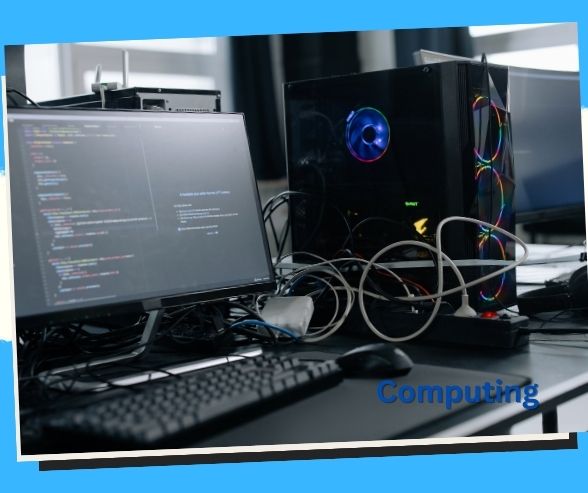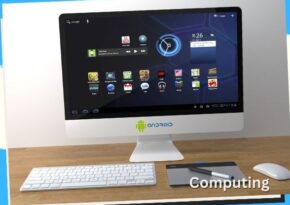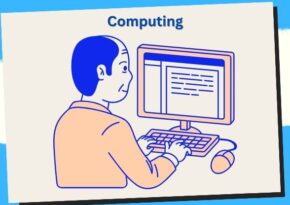
Winning with Edge Computing: Ways It’s Giving Businesses an Edge
Explore the world of edge computing and uncover the powerful benefits of reshaping how we process, analyze, and utilize data.
Unveiling the Benefits of Edge Computing: Powering Real-Time Insights in a Connected World 


In the digital age, where data flows ceaselessly, and real-time decision-making is paramount, edge computing has emerged as a revolutionary paradigm. This innovative approach to data processing is transforming industries and reshaping the way we interact with technology. In this comprehensive article, we will explore the manifold benefits of edge computing, understanding how it enhances efficiency, reduces latency, and unlocks a world of possibilities.
Understanding Edge Computing
Before delving into its advantages, let’s grasp the essence of edge computing. At its core, edge computing involves processing data closer to the data source, sensors, devices, or endpoints. Unlike traditional cloud computing, which sends data to remote servers for analysis, edge computing brings computational power to the network’s edge. This proximity enables real-time analysis, immediate decision-making, and bandwidth usage optimization.
Benefits of Edge Computing
The benefits of edge computing extend across various industries and use cases. Here, we explore the most prominent advantages:
1. Reduced Latency
One of the most significant advantages of edge computing is the drastic reduction in latency. Latency refers to the delay between sending data and receiving a response. Even a slight delay can have significant consequences in scenarios where split-second decisions are crucial, such as autonomous vehicles, industrial automation, and gaming. Edge computing processes data locally, minimizing the time it takes to transmit data to a distant data center and receive a response. This leads to immediate, real-time actions and enhances user experiences.
2. Real-Time Insights
Edge computing unlocks the potential for real-time insights. Traditional cloud-based data processing involves sending data to a central server, where it’s analyzed and a response is generated. This process introduces latency, which can harm applications requiring immediate insights. With edge computing, data is processed on the spot, enabling instant analytics and decision-making. This is particularly valuable in critical infrastructure monitoring, detecting anomalies, and responding to emergencies.
3. Bandwidth Optimization
The optimization of network bandwidth is a key advantage of edge computing. Transmitting large volumes of data to centralized cloud servers can strain networks, leading to congestion and slower data transmission. Edge computing reduces the need to send raw data over long distances. Instead, only relevant, preprocessed data is sent, conserving bandwidth and ensuring efficient network operation. This is crucial for applications involving many devices generating data simultaneously, such as smart cities and industrial IoT.
4. Enhanced Security and Privacy
Security and privacy concerns have become paramount in the digital era. With centralized data processing, transmitting sensitive data to remote servers can expose it to potential security breaches. Edge computing mitigates this risk by processing sensitive data locally. This means critical information remains closer to its source and less susceptible to interception during transmission. Moreover, localized data processing reduces the need for sending sensitive information across networks, adding an additional layer of protection.
5. Offline Operation
Edge computing enables devices to function even when connectivity to central servers is lost. This offline operation is crucial in scenarios where continuous functionality is required, regardless of network availability. For example, remote locations, industrial sites, and transportation systems can continue operating using localized edge computing resources. This resilience ensures that critical operations are not disrupted due to network outages.
6. Scalability
Edge computing’s distributed architecture allows for seamless scalability. Organizations can easily deploy additional edge devices as the demand for data processing increases. This flexibility ensures the system can accommodate growing data volumes without overwhelming centralized data centers. Scalability is particularly valuable in applications like IoT, where the number of connected devices can quickly multiply.
7. Improved Efficiency
Edge computing enhances operational efficiency by reducing the workload on centralized servers. Edge devices process data locally, performing initial analysis and filtering. Only relevant data is sent to centralized servers for further processing. As a result, centralized data centers can focus on more complex tasks, optimizing their resource allocation and improving overall efficiency.
8. Customized Solutions
Edge computing enables organizations to create tailored solutions for specific applications and environments. Organizations can design algorithms and processes that cater to their unique needs by processing data locally. This customization allows for more efficient data analysis and the development of solutions optimized for the specific context in which they operate.
Applications of Edge Computing
The benefits of edge computing find applications in a multitude of industries:
1. Internet of Things (IoT)
IoT devices generate vast amounts of data. Edge computing enables real-time analysis of this data, making it valuable for applications like smart homes, wearable devices, and industrial IoT.
2. Smart Cities
Edge computing powers the infrastructure of smart cities. It enables real-time monitoring of traffic, energy consumption, waste management, and public safety.
3. Industrial Automation
Manufacturing and industrial processes require immediate analysis for quality control and predictive maintenance. Edge computing ensures that data is analyzed at the source, enabling quick decisions.
4. Healthcare
Edge computing is crucial in healthcare applications like remote patient monitoring and real-time diagnostics. It enables medical professionals to respond promptly to critical situations.
5. Retail
Retailers use edge computing to optimize inventory management, personalize customer experiences, and enable seamless checkout processes.
6. Autonomous Vehicles
Edge computing processes data from sensors in autonomous vehicles, ensuring real-time decision-making for navigation, collision avoidance, and route optimization.
Challenges and Considerations
While edge computing offers numerous advantages, it’s important to acknowledge the challenges it presents:
1. Limited Resources
Edge devices often have limited processing power, memory, and storage capacity compared to centralized data centers.
2. Security Concerns
Securing edge devices against cyberattacks is challenging due to resource limitations and a potentially broader attack surface.
3. Data Management
Managing data generated by numerous edge devices requires robust data management solutions to ensure data integrity and consistency.
Closing Thoughts
Edge computing is a game-changing paradigm that empowers industries with immediate insights, efficient data processing, and real-time decision-making. By bringing computation closer to the data source, edge computing revolutionizes how we interact with technology. Its benefits extend to various domains, from smart cities to healthcare, from retail to manufacturing. As we witness technological evolution, edge computing’s potential is poised to reshape industries, enhance user experiences, and drive innovation in the digital era.
Related Queries










Save/Share this story with QR CODE
Disclaimer
This article is for informational purposes only and does not constitute endorsement of any specific technologies or methodologies and financial advice or endorsement of any specific products or services.
 Need to get in touch?
Need to get in touch?

We appreciate your reading. 
1.) 

Your DONATION will be used to fund and maintain NEXTGENDAY.com
Subscribers in the Philippines can make donations to mobile number 0917 906 3081, thru GCash.
3.) 
4.) 
AFFILIATE PARTNERS

World Class Nutritional Supplements - Buy Highest Quality Products, Purest Most Healthy Ingredients, Direct to your Door! Up to 90% OFF.
Join LiveGood Today - A company created to satisfy the world's most demanding leaders and entrepreneurs, with the best compensation plan today.

 Business, Finance & Technology
Business, Finance & Technology








 Witness the AI revolution firsthand – discover how artificial […]
Witness the AI revolution firsthand – discover how artificial […]


 Take command like never before – explore how smartphones […]
Take command like never before – explore how smartphones […]
